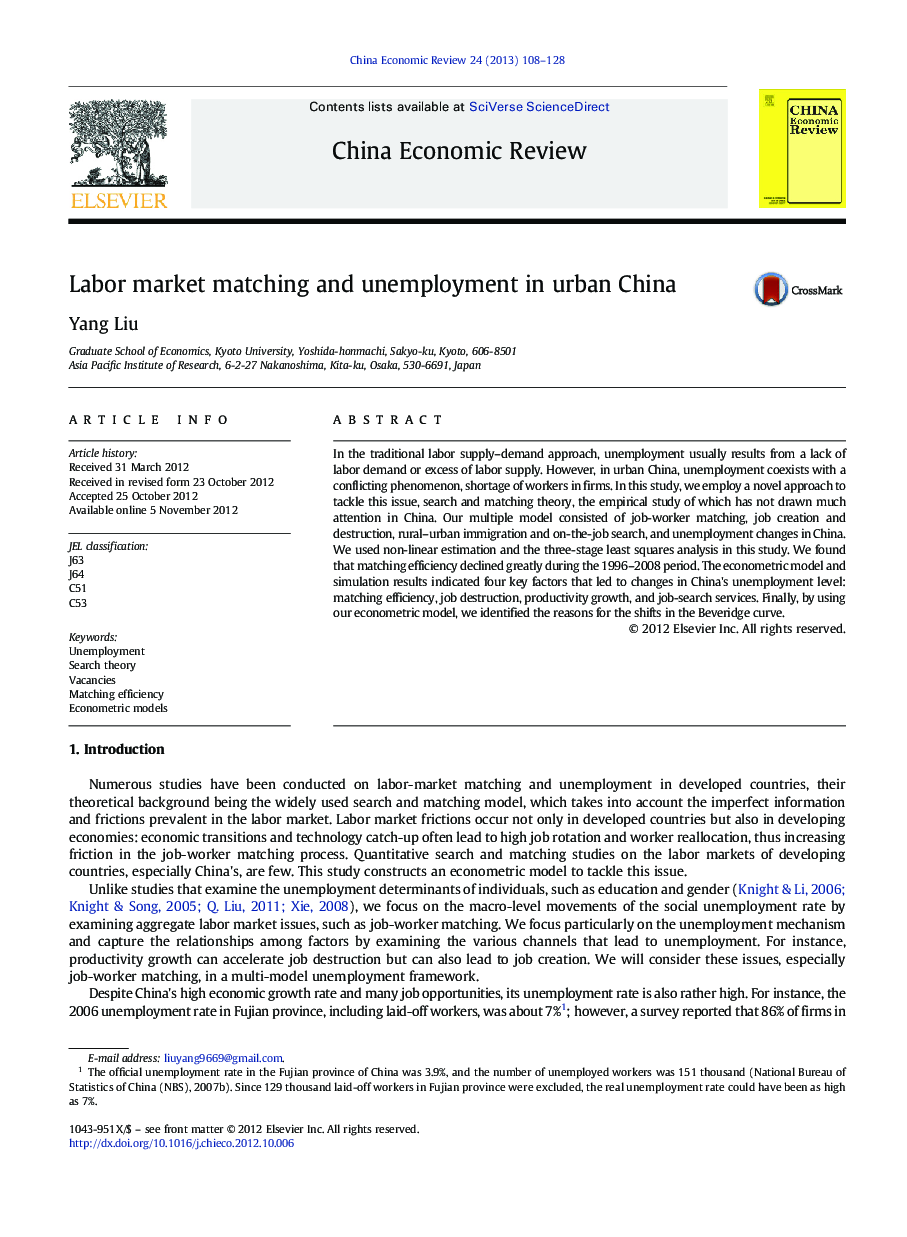| Article ID | Journal | Published Year | Pages | File Type |
|---|---|---|---|---|
| 5047700 | China Economic Review | 2013 | 21 Pages |
In the traditional labor supply-demand approach, unemployment usually results from a lack of labor demand or excess of labor supply. However, in urban China, unemployment coexists with a conflicting phenomenon, shortage of workers in firms. In this study, we employ a novel approach to tackle this issue, search and matching theory, the empirical study of which has not drawn much attention in China. Our multiple model consisted of job-worker matching, job creation and destruction, rural-urban immigration and on-the-job search, and unemployment changes in China. We used non-linear estimation and the three-stage least squares analysis in this study. We found that matching efficiency declined greatly during the 1996-2008 period. The econometric model and simulation results indicated four key factors that led to changes in China's unemployment level: matching efficiency, job destruction, productivity growth, and job-search services. Finally, by using our econometric model, we identified the reasons for the shifts in the Beveridge curve.
⺠We model China's unemployment in the search and matching-theory approach. ⺠Non-linear estimation and the three-stage least squares analysis are used. ⺠We find that job-worker matching efficiency declined greatly in 1996-2008. ⺠Unemployment causes: low matching efficiency, job destruction, productivity growth. ⺠Job-search services could be effective in solving the unemployment problem.
